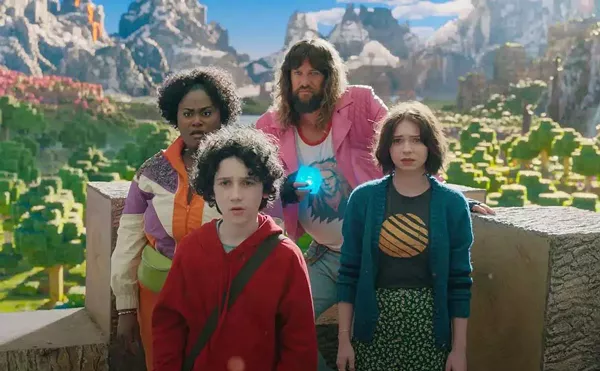Prometheus:
The Art of the Film
Mark Salisbury,
foreword by Ridley Scott
Titan Books, $39.95, 186 pp.
If your vision of the future is gray and dreary, most likely you can give a good bit of the credit to Ridley Scott. Sure, dystopian fiction has been around for a long time. But even though George Orwell presented Nineteen Eighty-Four back in 1949, the book had imparted a feeling (boot-in-the-face future), but couldn't convey a look, even in its film versions. In the late '60s. Stanley Kubrick's 2001 felt as pristine as a silicon chip-making lab, and even when Luke Skywalker and company fell into a Death Star trash compactor a decade later, it wasn't all that icky.
Arguably, life to come didn't really start to loom as dreary and icky until the advent of Alien in 1979. That's when the aesthetic of goo and the biomorphic gothic seeped into the crystal ball thanks to director Ridley Scott and his collaborators, particularly artist H.R. Giger.
Alien, of course, begat its sequels with other directors. And Scott brought the dreariness back to planet Earth in 1982's Blade Runner, which pretty much colored the film futures that have followed. Now, after 30 years, Scott is back with an Alien prequel in Prometheus, picking at the ominous and unexplained iconography that began in the original to spin a new tale.
Reviews have been mixed — perhaps universally praising the visuals and action and a thumbs-down on the New Age philosophizing. (Someone must be taken by the latter, but we haven't read such a review yet.)
"Like Martin Scorsese's Hugo, Prometheus demonstrates the impact and majesty that can be achieved when a master craftsman employs the latest cinematic technologies," wrote MT's Jeff Meyers. Then came the lamenting: "Too bad its muddled and chaotic script, by Jon Spaihts and Damon Lindelof, is more interested in presenting than exploring provocative ideas. ..."
The film, he writes, "turns into lavish B-movie chaos filled with random events (who decided to include a zombie?), illogical actions and a half-realized retread of Alien's infestation trope."
But back to the visuals, for those who want even more of them, Mark Salisbury's illustrated guide is as good as it gets. The lavish coffee table product has production art, storyboarding, interviews with the visual team, and Scott's own introduction. From spaceships to planetary terrains to the aliens, from the physically constructed sets to the special effects illusions, every picture has a backstory.






